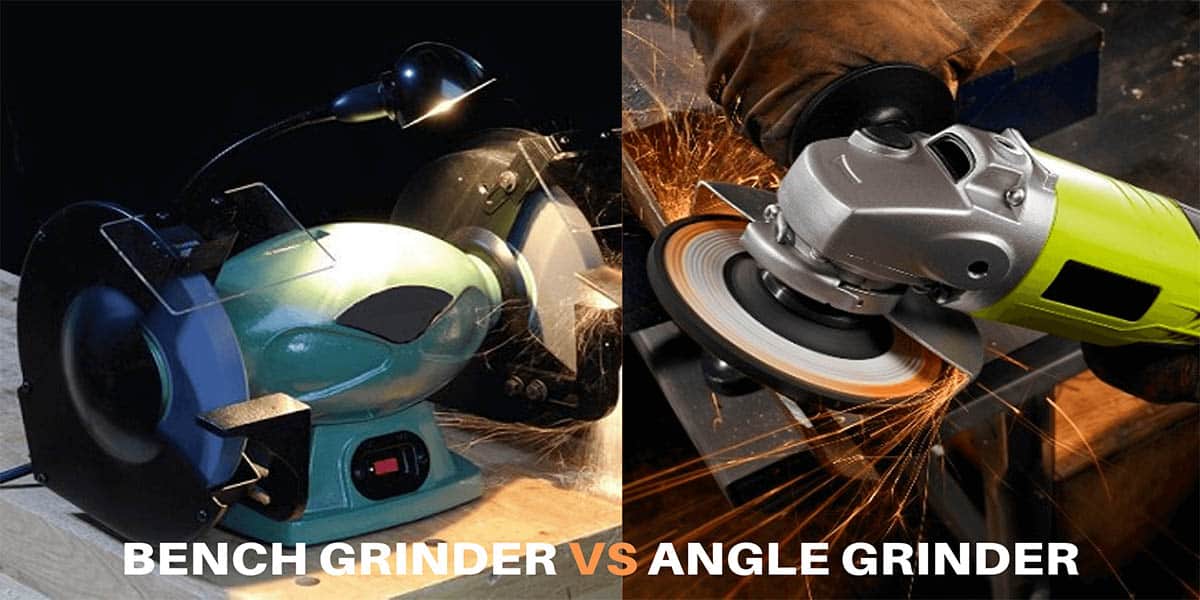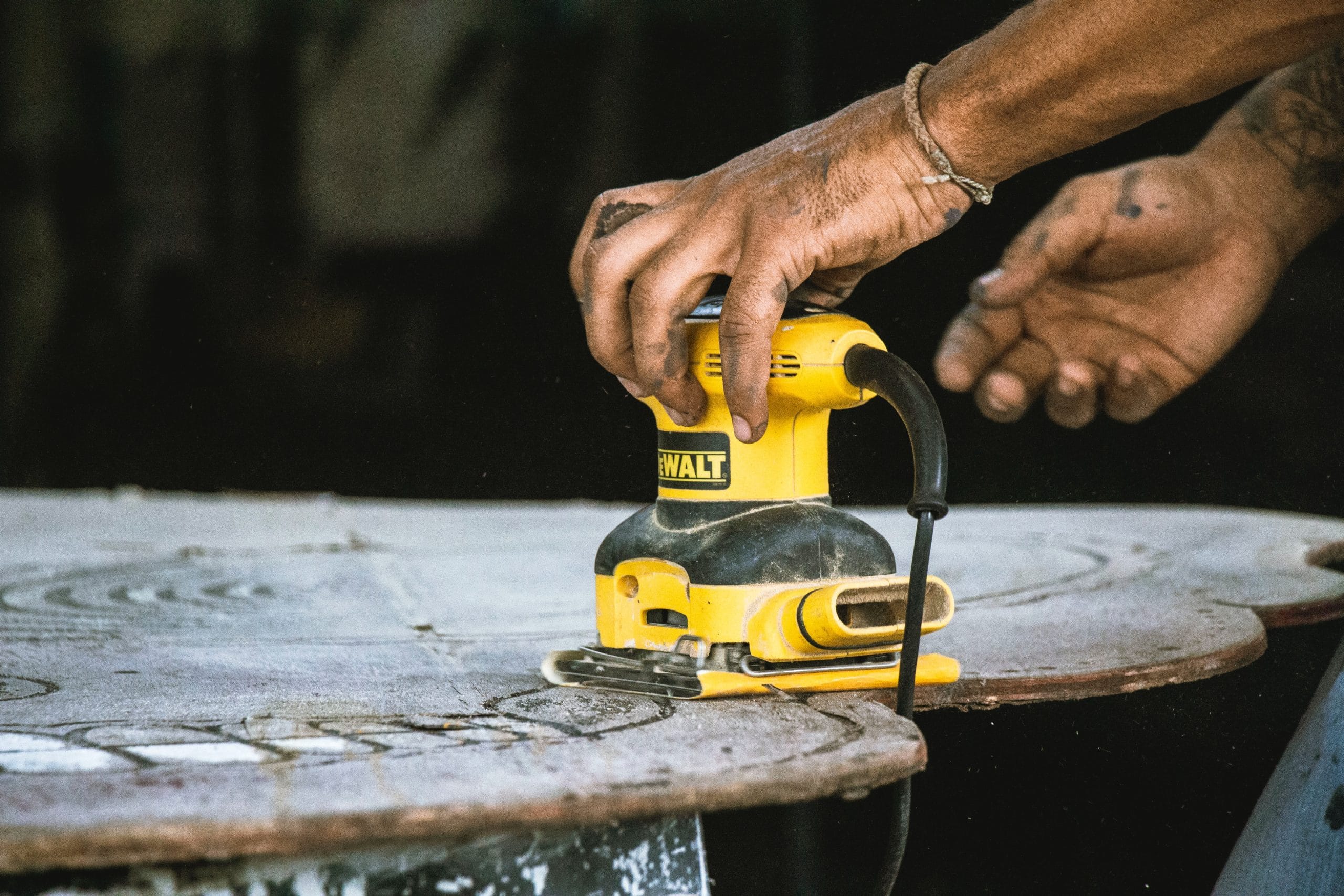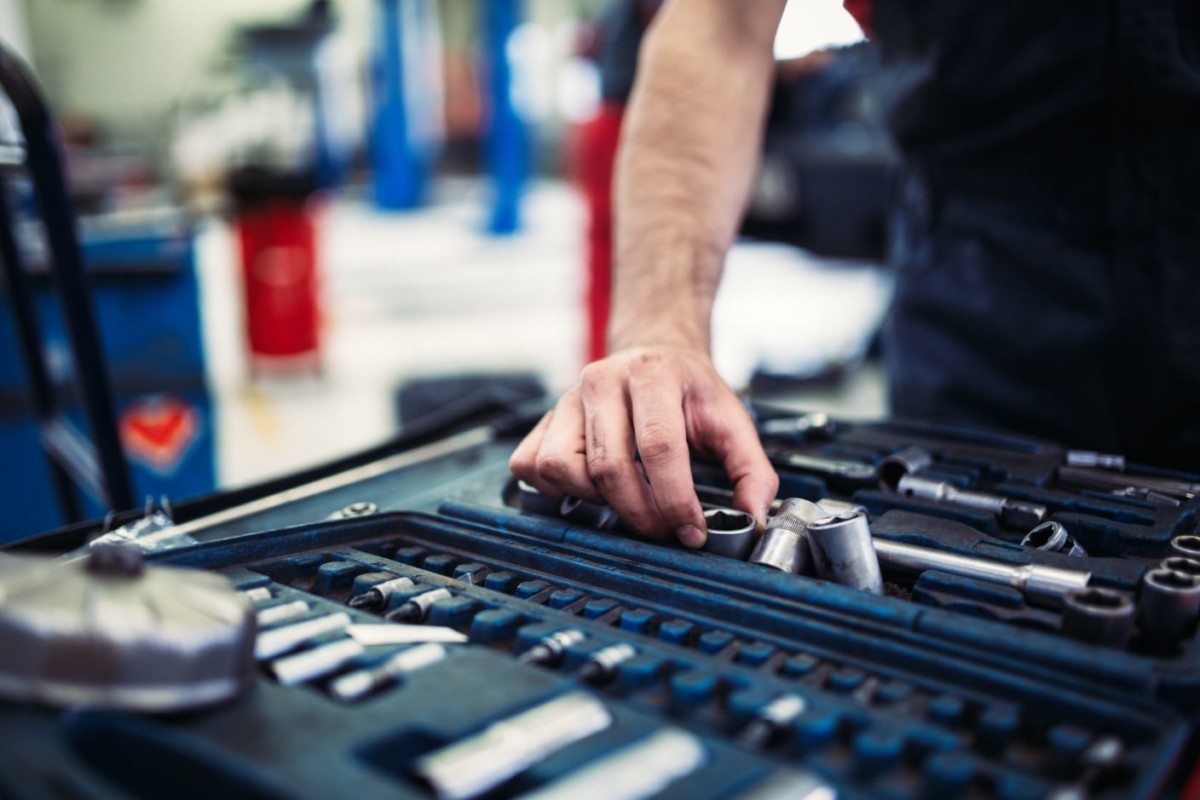Did you visit a hardware shop and got confused between two more or less similar products?
This is a common practice of DIY enthusiasts.
One such example is the Angle grinder and bench grinder. Though both are powerful tools that make your work super easier.
Literally, which one to choose between them becomes a weighty question.
At drillanddriver.com we will be going to reveal some basic differences between angle grinders and bench grinders so that you can decide easily which power tool will be more useful for you.
Angle grinders are also called side grinders or disc grinders. According to anglegrinderguide.com, disc grinders are handheld power tools that can be used for various jobs such as cutting, grinding, sanding, and polishing.
Angle grinders give you lots of mobility options.
In contrast to this, bench grinders are stationary grinders with two abrasive discs that are primarily used for sharpening different tools and objects.
For proper working of the bench grinder, it should be attached to a workbench or any flat surface.
Angle grinder vs. bench grinder is a worth discussing topic as there are so many differences between these two power tools.
So just stick to this article. We have gathered some useful differences between these two powerful tools to make things easier for you.
Let’s get started!

Angle Grinder vs Bench Grinder: What’s the Difference?
Angle grinder and bench grinder are quite useful tools that can be used to do numerous work.
These are the power tools that are the must-have tool in any DIY-enthusiast’s toolbox, keeping in mind that the person must be fully aware of their difference.
This way you can decide which grinder is best suited for a particular job.
Have a close look at the major differences between angle grinders and bench grinders.
- WEIGHT AND PORTABILITY:
Angle grinder is a handheld tool that weighs around 7-8 pounds, except few models that weigh more than 8 pounds.
This is the power tool that you can easily hold in your hand and maneuver around the object easily.
While working with an angle grinder, you need to control the movement of the angle grinder rather than controlling the object.
In contrast to this, a bench grinder is not a portable tool. You need to attach it to a benchtop. While using bench grinders, you have to control the movement of material, obviously, you cannot move bench grinders.
Bench grinders come with a cast-iron base. Since cast iron is quite heavy, so it keeps the grinder stable at its position. Because of cast iron, it becomes quite heavy.
That’s the reason the bench grinder spends most of its time on the workbench of the workshop, whereas, an angle grinder is a tool that is often seen at the worksites.
- DESIGN AND APPEARANCE:
When it comes to design and appearance, it would not be wrong if I say that there are differences like chalk and cheese between angle grinder and bench grinder.
Literally, look wise both power tool looks different.
An angle grinder is a slim, compact tool that is designed to fit into your hands. It has one abrasive wheel and a long arm body that provides a firm grip for easy maneuvering.
Interestingly, this grip provides extra support for reducing vibration. Angle grinder has to be taken near the workpiece.
On the other hand, bench grinders are bench-top type grinders that are designed in such a way that they can easily stand with stability on any flat surface.
It does not have any handle for holding. The workpiece has to be brought near the bench grinder.
- WHEELS :
You have seen this, that angle grinder has a single place for abrasive wheel, but you can change different discs to get different types of jobs done.
On the flip side, bench grinders have two spaces for two different grit sizes of abrasive disc.
This means you won’t need to stop the machine and change the grit size when you want to change, as in the angle grinder. All you have to do is just change the side.
- WHEEL SPEED:
Wheel speed is the place where the angle grinder gets the highest marks as compare to other power tools.
Usually, angle grinders have a wheel speed of 8000- 12000 RPM. This way you can complete a deep cutting task in just a few minutes.
Talking about the bench grinder, its wheels rotate with the speed of 3000-3500RPM. For more precise working, a bench grinder can be used.
- FUNCTION and PURPOSE:
The basic purpose of the bench grinder is to sharpen and shaping different objects.
It’s a perfect sharpening tool for those tools that require the use of two hands to get a perfect shape.
Apart from this, a bench grinder can be used to buff, polish, or clean any piece of metal.
But let me mention, it is not a versatile tool like an angle grinder that can be used to perform multiple jobs.
The angle grinder is not only used for cutting but can also be used for grinding, sanding, polishing. It can be used to sharpen different objects.
But it’s quite typical to sharpen an object with one hand. Honestly speaking, the angle grinder is more useful for sanding and polishing different objects.
- VIBRATIONS:
Since both tools are power tools that are operated by motor so vibration is compulsory. But in the case of the angle grinder, the user feels more vibration.
The reason is, an angle grinder is small and light in weight. While bench grinder is relatively heavier than the angle grinder and is designed to be kept on a flat surface. This automatically reduces vibrations.
|
PARAMETER
|
ANGLE GRINDER
|
BENCH GRINDER
|
|
WEIGHT
|
Light weight (6-8 pounds)
|
Heavy weight(cast-iron bottom)
|
| PORTABILITY
|
Portable- handheld tool
|
Not portable- stationary bench top tool
|
|
MANEUVERABILITY
|
Maneuver around the object
|
Object maneuver around the grinder.
|
| WHEELS
|
One wheel
|
Two different grit size of wheels
|
| SPEED
|
8000-12000RPM
|
3000-3500RPM
|
| USES
|
Cutting, sanding, grinding, and polishing
|
Sharpening tools
|
| VERSATILE
|
yes
|
no
|
ANGLE GRINDER
Positive Points:
- Handheld and portable tool
- Speedy and stable
- Easy to use
- Easy to change discs
- Come with a variety of wheel sizes and options
- Easy to maneuver according to the desired angle
- Can get access to the strangled side of work-piece.
Negative Points:
The tool may get overheated some time.
BENCH GRINDER
Positive Points:
- Comparatively stable and firm tool
- Comes with a variety of wheels
- Less or minimum vibrations
- Cast iron base for a stable position
- Durable and long-lasting
Negative Points:
- Not versatile
- Not portable
- Not for naïve people
Final Words:
We have used all our information to give you a basic comparison between angle grinders and bench grinders.
Now the decision is all yours, keeping in mind their differences and your work nature, get your hands on the desired grinders.
Though there are few similarities between these two power tools yet their purpose makes them a bit different from each other.
You can use a bench grinder for cutting like an angle grinder, but it would be limited for getting into congested corners. For this, you will need to use an angle grinder.
Remember, these are the power tools that work on high speed, so don’t forget to follow basic safety rules.
![Metabo VS. Makita Angle Grinder [Complete Guide] Metabo VS. Makita Angle Grinder [Complete Guide]](https://www.drillanddriver.com/wp-content/uploads/2019/06/Metabo-VS.-Makita-Angle-Grinder-300x225.jpg)
![How To Cut a Ceramic Tile That Is Already Installed [5 Steps] How To Cut a Ceramic Tile That Is Already Installed [5 Steps]](https://www.drillanddriver.com/wp-content/uploads/2022/04/How-To-Cut-a-Ceramic-Tile-That-Is-Already-Installed.jpg)
![Makita VS. Black and Decker Cordless Drill [Specs and FAQs] Makita VS. Black and Decker Cordless Drill [Specs and FAQs]](https://www.drillanddriver.com/wp-content/uploads/2019/06/Makita-VS.-Black-And-Decker-Cordless-Drill-300x225.webp)
![Dremel 8220 Cordless vs. 4300 Corded Rotary Tool Kit [Don't Get Bogged] Dremel 8220 Cordless vs. 4300 Corded Rotary Tool Kit [Don't Get Bogged]](https://www.drillanddriver.com/wp-content/uploads/2021/09/Dremel-Rotary-Tool-Kit-300x225.jpg)

![How to Remove a Broken Drill Bit? [Causes & 4 Ways] How to Remove a Broken Drill Bit? [Causes & 4 Ways]](https://www.drillanddriver.com/wp-content/uploads/2021/12/How-to-prevent-breaking-a-bit.jpg)
![What Size Drill Bit For 1/4" 20 Tap? [with Tap & Drill Bit Size Table] What Size Drill Bit For 1/4" 20 Tap? [with Tap & Drill Bit Size Table]](https://www.drillanddriver.com/wp-content/uploads/2021/11/What-Size-of-Drill-Bit-is-for-1-4-20-Tap-300x225.jpg)
![How To Cut A Bolt? [Step-By-Step Guide] How To Cut A Bolt? [Step-By-Step Guide]](https://www.drillanddriver.com/wp-content/uploads/2021/12/What-Is-A-Bolt.jpg)
![Is Makita a Good Brand [Why So Expensive] Is Makita a Good Brand [Why So Expensive]](https://www.drillanddriver.com/wp-content/uploads/2020/03/Is-Makita-A-Good-Brand.jpg)

![Dremel 3000 vs. 4000 [Rotary Tool Comparison] Dremel 3000 vs. 4000 [Rotary Tool Comparison]](https://www.drillanddriver.com/wp-content/uploads/2021/10/Most-Popular-Products.jpg)
![How To Remove A Stripped Screw or Bolt? [Easiest Way] How To Remove A Stripped Screw or Bolt? [Easiest Way]](https://www.drillanddriver.com/wp-content/uploads/2021/09/How-To-Remove-A-Stripped-Screw-or-Bolt-300x225.webp)
